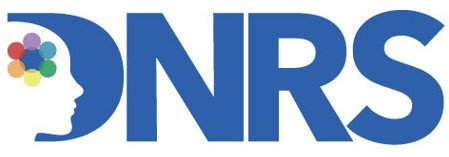In the first of our four-week series of articles on the limbic system and Chronic Post COVID-19 Syndrome, we explored the relationship between the “fight, flight, or freeze” response in the brain and chronic symptoms of “long-hauler” COVID-19 that can express in multiple systems of the body.
As we explained in the first article, during infection, as a self-protective mechanism, the brain switched into “high alert” to prepare the body to fight the virus. This is often referred to as the “fight, flight, or freeze” response. This natural defense mechanism resulted in changes to the brain (neuroplasticity) to protect you (immune response) against impending danger (the virus).
Trauma caused by COVID-19 can take many forms; we learn more every day about organ damage and other injuries some patients sustain from the acute phase of the virus itself, or after intensive care and hospitalization. It’s important to acknowledge that while any calming of the limbic system’s stress response will improve one’s overall health, DNRS is especially useful for relieving the chronic, “unexplained” symptoms that can linger in “long-hauler” patients who had a mild or moderate case of COVID-19, one that likely triggered a self-renewing “fight, flight, or freeze” defense mechanism in the brain.
Unfortunately, if the brain gets stuck in the “fight, flight, or freeze” response, it sends alert messages to all systems of the body.
Any isolated or combined trauma can cause stress overload in the brain. When we reach the “tipping point,” the basic survival mechanisms in the brain become overstimulated. This protective mechanism can become chronically engaged, physically altering the structure and function within the limbic system in the brain. Consequently, this cross-wiring of neural circuits sends false threat messages to the rest of the body. It also activates a primitive defense system that releases a never-ending stream of stress hormones. This influences many body processes involved with emotions, sensory perception, cognitive function, digestion, energy, detoxification, immune function, and libido. It causes the body to go from a state of recovery, growth, and repair to one of shutdown and survival. Understandably, this can lead to breakdown in many systems of the body.

“I noticed improvements immediately in different areas, and I knew it was a matter of time and practice before my sensitivities calmed down again.”
–Victor
Let’s talk about how this maladapted stress and threat response affected Victor. He found himself on this “hamster wheel” of stress response in the limbic system after his bout with COVID-19, and explains, “Before COVID-19, I was recovering from limbic impairment and the associated anxiety and other sensitivities I had developed from long-term chronic stress over the years. When the lockdowns began, I became symptomatic with fever, fatigue, and later with a dry cough. I was working as an Uber driver and had exposure to lots of people, including international travelers.” Because he was in a high-risk situation, Victor didn’t want to risk exposing his elderly parents. “I immediately self-isolated and was not able to get tested…I had chills initially, and then a fever that lasted about six or seven days. I felt increased fatigue, and after my fever broke, I waited three or four days before I came out of isolation. I noticed that I was feeling out of breath with normal things and activities, and when I went to run an errand in my car, I definitely felt my visual and EMF sensitivities had increased significantly. My sensitivities to light and sound also came back, and I felt more irritable.”
Victor set up a call with a Certified DNRS Coach, and she explained how a virus can pose as a new, acute stressor to the brain. He was guided to ramp up the training he had learned with the Dynamic Neural Retraining System (DNRS). “I felt very motivated to implement the DNRS tools and suggestions from my coach,” Victor says. “I noticed improvements immediately in different areas, and I knew it was a matter of time and practice before my sensitivities calmed down again.”
According to Victor, implementing the DNRS program has been literally a life-saver. “I do my best to practice all the tools I learned, because they truly do work on correcting both chronic and acute brain stressors. It is easy to go down a negative rabbit hole without the proper tools for addressing issues that cause the brain to malfunction. My strength and cardio capacity is way up as I surf and fish in triple-digit weather down here in south Texas! I am truly grateful for the ability to do this again, and for all the major health improvements I continue to see.”
If you are suffering with lingering, chronic symptoms after a COVID-19 infection, Victor recommends using the Dynamic Neural Retraining System to regulate the stress effects on the brain, and resolve the sense of hopelessness and suffering. “You will learn so much about your health and the science behind brain neuroplasticity in real-time,” he explains. “They have wonderful resources from various online learning programs, and support such as coaching. They truly care about helping people get their health and lives back.”
You are not crazy, or weak, or dreaming it if your lingering symptoms are not resolving after “recovering” from COVID-19.
It’s time to explore DNRS in consultation with your health care provider to see if the program is the right fit for you. The DNRS program can be implemented alongside any pharmaceutical or medical treatment you may be taking for Post COVID-19 symptoms. DNRS will move your brain and body from a state of survival into a state of growth and repair, where true healing can finally take place.
Next week, you’ll meet Johanna, who had enjoyed full recovery from multiple chemical sensitivities, a chronic sinus and eye infection, and chronic pain through DNRS, prior to contracting COVID-19. Hear how DNRS is transforming her experience of recovery from the virus.
For more information about how you might benefit from the DNRS program, please visit our website at retrainingthebrain.com.
Yours in Good Health,
Annie Hopper and the DNRS Team

